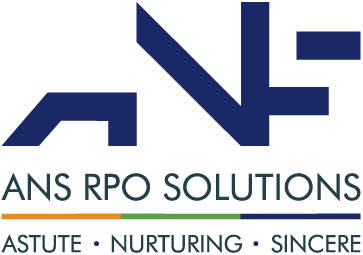Building a robust recruitment strategy that embraces diversity and inclusion is essential for organizations in today’s multicultural and inclusive business landscape. Full cycle recruitment, which encompasses all stages of the recruitment process from sourcing to onboarding, provides a comprehensive framework to integrate diversity and inclusion into every step.
Diversity and inclusion in recruitment not only align with ethical and social responsibilities but also drive business success. A diverse workforce brings a wide range of perspectives, experiences, and talents that can foster innovation, enhance problem-solving capabilities, and improve overall organizational performance.
To develop a full-cycle recruitment strategy for diversity and inclusion, organizations need to adopt a holistic approach that addresses bias, establishes clear goals, and implements inclusive practices throughout the recruitment process. This article will outline key steps and considerations to help organizations build an effective recruitment strategy that embraces diversity and inclusion.
Full Cycle Recruiting: All You Need to Know
In this article, we will explore the importance of diversity and inclusion in recruitment and their impact on organizational success. We will delve into strategies for mitigating bias in sourcing and selection, fostering an inclusive candidate experience, and establishing metrics to measure diversity and inclusion progress.
- Define Clear Diversity and Inclusion Goals:
Defining clear diversity and inclusion goals is an essential first step in building a full-cycle recruitment strategy. This involves identifying specific objectives that align with the organization’s values and business objectives. It is important to have a clear understanding of what diversity and inclusion mean for the organization and how they contribute to its success. When defining diversity and inclusion goals, organizations should consider various dimensions of diversity, including but not limited to race, gender, ethnicity, age, disability, sexual orientation, and socioeconomic background. By acknowledging and valuing these diverse perspectives, organizations can create an inclusive environment where everyone feels welcomed and respected.
- Mitigate Bias in Sourcing and Selection:
Mitigating bias in sourcing and selection is crucial to ensuring fairness, diversity, and equal opportunities in the recruitment process. One way to address bias is by implementing structured and standardized procedures throughout the entire sourcing and selection process. This includes establishing clear criteria for job requirements and qualifications, using consistent evaluation methods, and employing diverse interview panels. By relying on objective and job-related factors, such as skills, experience, and performance indicators, rather than subjective impressions or personal biases, organizations can minimize the influence of unconscious biases that may lead to discriminatory practices. Additionally, leveraging technology and data-driven tools can help in reducing bias. Implementing blind resume screening, where identifying information is removed from resumes, can prevent unconscious bias based on factors like gender, ethnicity, or name. Furthermore, organizations can invest in training their recruiters and hiring managers on unconscious bias awareness and mitigation techniques. By raising awareness and providing tools to recognize and challenge bias, organizations can foster a more inclusive and equitable recruitment process. Ultimately, an ongoing commitment to mitigating bias in sourcing and selection is essential for creating a diverse workforce that reflects the values of fairness and equal opportunity.
- Foster an Inclusive Candidate Experience:
Fostering an inclusive candidate experience is crucial to attracting and retaining diverse talent and creating an environment where all candidates feel valued and respected. To achieve this, organizations can implement several strategies. First, they should ensure that job descriptions and communication materials are inclusive and free from biased language. This involves using gender-neutral terms and highlighting the company’s commitment to diversity and inclusion. Second, organizations should provide accessible application processes, such as offering alternative formats for submitting applications and accommodating individuals with disabilities. Third, maintaining transparent and consistent communication with candidates throughout the recruitment process is essential. Timely updates, clear expectations, and respectful treatment contribute to a positive experience. Lastly, organizations should actively seek feedback from candidates and use it to improve their processes continuously. By fostering an inclusive candidate experience, organizations can not only attract a diverse pool of talent but also enhance their employer brand and reputation.
Also Check: Maximizing the Benefits of Recruitment Process Outsourcing (RPO)
- Build Relationships with Diverse Communities:
Building relationships with diverse communities is a crucial step in creating an inclusive and diverse organization. To achieve this, organizations should engage with and actively participate in various communities representing different backgrounds, cultures, and identities. This can be done through partnerships with community organizations, attending cultural events, and participating in diversity-focused initiatives. By demonstrating a genuine commitment to diversity and inclusion, organizations can establish trust and rapport with these communities. Additionally, organizations can create targeted outreach programs to connect with diverse talent pools, such as attending career fairs or hosting networking events specifically for underrepresented groups. Building relationships with diverse communities not only helps organizations expand their talent pipeline but also fosters an inclusive culture by valuing and appreciating the perspectives and experiences of diverse individuals.
- Implement Diversity and Inclusion Training:
Implementing diversity and inclusion training is an essential step for organizations to cultivate a culture of diversity, equity, and inclusion. These training programs aim to raise awareness about biases, stereotypes, and discriminatory behaviors while promoting empathy, respect, and understanding. By providing employees with the knowledge and tools to recognize and address unconscious biases, organizations can create a more inclusive work environment. Diversity and inclusion training can cover topics such as cultural competence, allyship, mitigating bias in decision-making, and fostering inclusive communication. These programs can be delivered through workshops, online modules, or interactive sessions, tailored to the specific needs and challenges of the organization. By investing in diversity and inclusion training, organizations can empower their employees to contribute to a more inclusive workplace, where individuals from all backgrounds can thrive and succeed.

- Establish Metrics and Track Progress:
Establishing metrics and tracking progress is crucial for organizations to measure the effectiveness of their diversity and inclusion efforts. By setting clear and specific goals, organizations can assess their progress and identify areas that need improvement. Metrics can include tracking diversity demographics within the organization, such as the representation of underrepresented groups at various levels, as well as monitoring diversity in recruitment, retention, and promotion rates. Additionally, organizations can gather feedback through employee surveys, focus groups, or exit interviews to gauge employee satisfaction and experiences related to diversity and inclusion. Regularly reviewing and analyzing these metrics allows organizations to identify trends, gaps, and areas of success, enabling them to make data-driven decisions and implement targeted strategies to foster a more diverse and inclusive workplace.
- Promote and Collaborate with Employee Resource Groups (ERGs):
Promoting and collaborating with Employee Resource Groups (ERGs) is an effective way for organizations to promote diversity, inclusion, and employee engagement. ERGs are voluntary, employee-led groups that bring together individuals with shared characteristics or backgrounds, such as ethnicity, gender, or sexual orientation. By partnering with ERGs, organizations can tap into the expertise, perspectives, and ideas of these groups to shape and enhance their diversity and inclusion initiatives. ERGs can provide valuable insights and feedback on policies, programs, and practices, contributing to a more inclusive workplace culture. Collaboration with ERGs can involve joint initiatives, such as organizing events, training sessions, or awareness campaigns that celebrate diversity and educate employees. By actively involving and supporting ERGs, organizations demonstrate their commitment to fostering an inclusive environment where all employees can thrive.
Conclusion:
In conclusion, building a Full Cycle Recruitment strategy for diversity and inclusion is crucial for organizations to attract, hire, and retain a diverse workforce. By integrating diversity and inclusion practices into every step of the recruitment process, organizations can ensure fairness, equity, and equal opportunities for all candidates. This strategy involves implementing bias mitigation techniques, fostering an inclusive candidate experience, building relationships with diverse communities, providing diversity and inclusion training, and establishing metrics to track progress. Furthermore, collaborating with Employee Resource Groups (ERGs) enhances the organization’s ability to understand and address the unique needs and perspectives of diverse talent. A comprehensive Full Cycle Recruitment strategy for diversity and inclusion not only enhances organizational culture and performance but also contributes to a more equitable and inclusive society as a whole.
ANS RPO offers a set of strategic human resource services to clients and bridges the gap between the expectations and deliverables of the companies across the globe.


